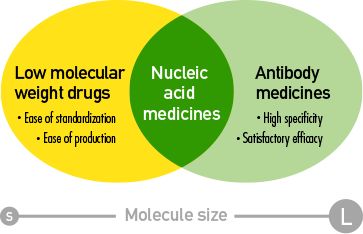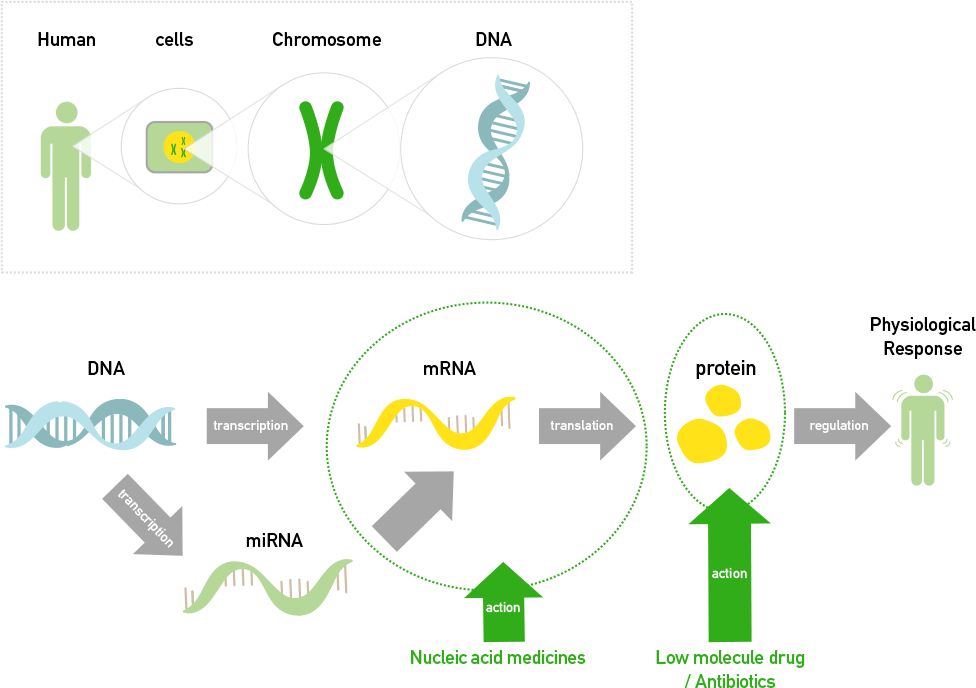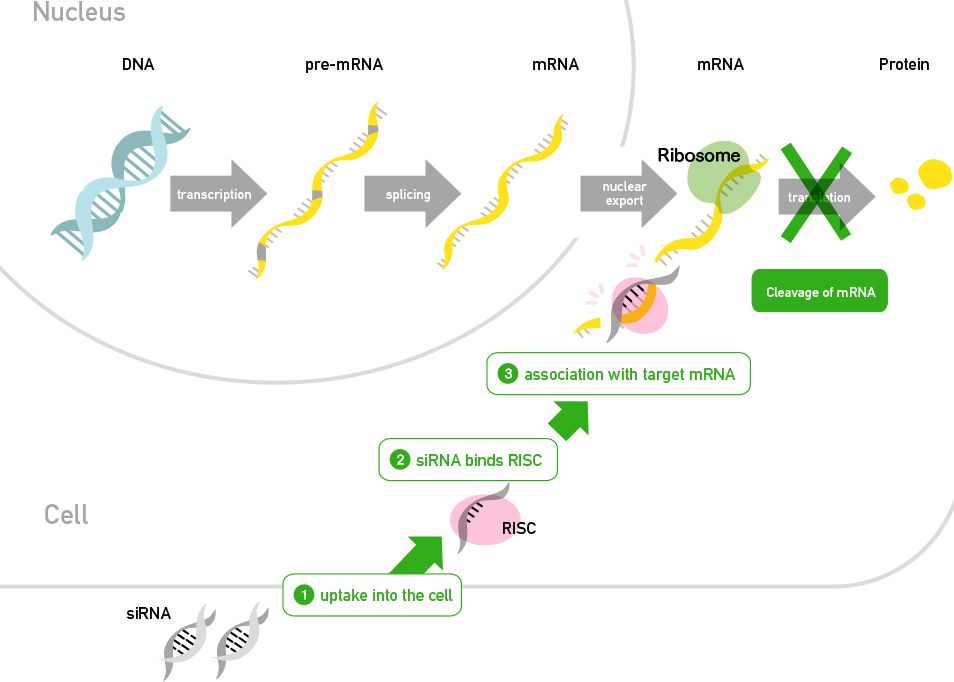“Nucleic acid drugs” utilize “nucleic acid,” which refer to substances such as DNA and RNA that control genetic information, as drugs. These allow targeting of molecules such as mRNA and miRNA that cannot be targeted with traditional low molecular weight drugs and antibody drugs, and there is a great expectation for these drugs as next generation pharmaceuticals. Active research is being conducted globally as it is expected to lead to the creation of drugs which were previously intractable.
On the other hand, it has been pointed out that the development of nucleic acid drugs has issues to overcome, including “(i) instability of nucleic acid molecules in the body,” “(ii) concerns for adverse drug reactions,” and “(iii) difficulty in the drug delivery system (DDS).” Also, Japanese companies are steps behind in the development of nucleic acid drugs due to the monopolization of dominant patents of nucleic acid by companies in Europe and the US, causing interference with Japanese development.
Characteristics of nucleic acid drugs
“Nucleic acid drugs” is a next generation drug discovery technology with a completely different mechanism of action than traditional pharmaceutical products. It also features the ability to be manufactured easily at moderate sized molecules and the potential to exhibit efficacy and safety that surpasses those of antibody drugs. Due to these features, there is an expectation for nucleic acid drugs to be applied in cancer and hereditary disorders which were previously difficult to treat, as well as in illnesses such as influenza and viral infections.
Types of nucleic acid drugs
Nucleic acid drug which utilizes DNA and RNA include those that target nucleic acids at the stage where protein is synthesized from genome DNA (such as mRNA and miRNA) and those that target protein.
Types and characteristics of nucleic acid drugs (drugs for prophylaxis and treatment)
There are nucleic acid drugs with different types and characteristics according to the targets and mechanisms of action.
|
Type |
Target |
Site of action |
Mechanism of action |
Summary |
| siRNA | mRNA | Inside the cell (cytoplasm) | mRNA cleavage | Double-stranded RNA with cleavage of mRNA homologous to thesequence (siRNA), single-stranded hairpin RNA (shRNA), etc.with effect according to the principle of RNAi |
| miRNA | microRNA | Inside the cell (cytoplasm) | microRNA replacement | Double-stranded RNA, miRNA of single-stranded hairpin RNAor its mimic is used to strengthen the function of miRNA deterioratedby disorders |
| Antisense | mRNA miRNA |
Inside the cell (in the nucleus, cytoplasm) | mRNA and miRNA degradation, splicing inhibition | Single-stranded RNA/DNA which binds to the target mRNAand miRNA to cause degradation or inhibition,or acts to skip exon when splicing |
| Aptamer | Protein (extracellular protein) | Outside the cell | Functional inhibition | Single-stranded RNA/DNA which binds to the target protein in a similar manner to antibodies/DNA |
| Decoy | Protein (transcription factor) | Inside the cell (in the nucleus) | Transcription inhibition | Double-stranded DNA with identical sequence to the binding sitefor transcription factor, which binds to the transcription factorof the affected gene to suppress the target gene |
| Ribozyme | RNA | Inside the cell (cytoplasm) | RNA cleavage | Single-stranded RNA with enzyme function for binding and cleavage of target RNA |
| CpG oligo | Protein (receptor) | Cell surface | Immunopotentiation | Oligodeoxynucleotide with CpG motif (single-stranded DNA) |
| Other | - | - | - | Nucleic acid drugs other than those listed above which act toactivate innate immunity, such as PolyI:PolyC (double-stranded RNA)and antigen |
Post time: Jul-25-2023











